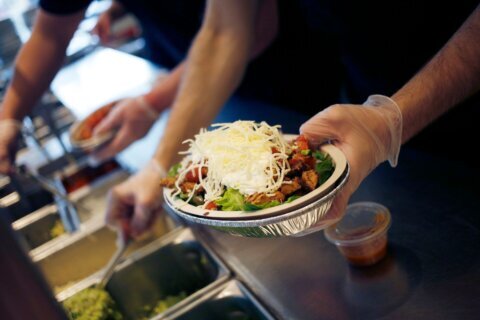Food has become much more expensive over the last few years.
Between 2019 and 2023, overall food prices increased by 25%. In comparison, the 20-year average inflation rate on retail food is 2.5% per year, according to the U.S. Department of Agriculture.
Here’s a closer look at the recent trends and five ways to keep your costs down.
Food Cost Trends
The most recent cycle of food price volatility began shortly after the start of the COVID-19 pandemic. In June 2020, the food inflation rate was 4.1%, up from 1.9% just three months earlier.
Prices leveled off soon after and dropped to 2.2% by May 2021 but then inflation began to run away — leading to the largest increase in prices since 1981, according to the U.S. Bureau of Labor Statistics. By August 2022, the cost of food overall had increased by 11.4% year over year.
Thankfully, inflation rates have sharply declined since then and the food inflation rate returned to 2.2% in February 2024, according to the BLS, but food prices still haven’t fallen.
So, how are the increases in food costs impacting the budgets of American households?
U.S. consumers are spending an average of 11.3% of their disposable income on food in 2022, according to the USDA — a high not seen since the 1980s. From 2000 until the pandemic, food had consumed around 10% of people’s budgets.
Along with the shift in costs, Americans are now spending about the same amount of money on eating out as eating in.
Food expenses were split almost evenly with 5.62% spent on food at home and 5.64% spent on food away from home in 2022. In years past, however, food at home has always held a much larger share of household budgets.
How to Keep Your Food Costs Down
While food prices may be up, here are five ways to keep your costs down:
1. Limit the Most Inflated Items
Inflation has impacted different food items in different capacities. For example, here are the five food types that have increased the most from 2020 to 2023:
— Eggs (+38.1%).
— Fats and oils (+32.1%).
— Cereals and bakery products (+23.7%).
— Processed fruits and vegetables (+22.9%).
— Poultry (+22.8%).
And here are the five foods that have increased the least over the same period:
— Fresh vegetables (+9%).
— Fresh fruits (+14.1).
— Fish and seafood (+14.8%).
— Pork (+16.1%).
— Dairy products (+17.4%).
You can trim down your costs by including lower-cost items on your shopping lists. For example, perhaps you plan more fish and pork dinners than chicken and opt for fresh over processed fruits and vegetables.
2. Choose a Cheap Grocery Store
Another factor to consider is the grocery store you frequent. Certain stores are much more expensive than others.
For example, according to data collected in the 2024 Grocery Panel Study by Marketforce, only 41% of people who primarily shop at Sprouts cite “value for money paid” as an important factor versus 78% of Aldi’s primary shoppers.
[These Are the 10 Cheapest Grocery Stores in the U.S.]
You can save more by choosing a discount store like WinCo, Aldi or Grocery Outlet — these all skip the frills to offer the lowest possible prices.
3. Reduce Food Waste
You can also save by eating more of the food you buy. The USDA estimates that 30% to 40% of the U.S. food supply goes to waste. While all that waste doesn’t occur in American homes, some of it does.
You may waste food, for example, if you buy more than you can eat and throw away the extras, or let food go bad before using it. Andrea Woroch, a consumer and money-saving expert, said in an email that throwing food away is like throwing away your hard-earned money.
[READ: How Much Should I Spend on Groceries?]
One way she suggested reducing waste is by meal planning.
“Look at the calendar for the week to figure out which meals you’ll eat at home. Then, pick your family’s favorite meals with themes like Taco Tuesday or Pizza Friday to keep it simple and fun,” Woroch said.
She also suggested planning recipes that use the same ingredients so you use up everything you buy.
And don’t forget to be mindful of expiration dates as you shop and plan. For example, if it’s Monday and you have chicken that goes bad tomorrow and beef that’s good until Wednesday, be sure to cook the chicken first.
4. Look for Deals and Coupons
You can also save money on food by taking advantage of memberships, coupons and specials. Some grocery stores have clubs you can join to earn rewards and discounts.
“The Albertson’s For U Rewards app gives new users $5 off $25 and many product-specific digital coupons,” Woroch said.
You can also look into popular coupon apps that offer perks like savings on individual grocery items or cash back. Woroch said that Fetch offers cash back on groceries if you take pictures of your receipts and submit them through the app.
[Grocery Receipt Scanning Apps You Should Try]
4. Plant a Veggie Garden
Lastly, consider growing some food of your own.
“One way to keep food costs down these days is to grow your own fresh food so you have complete control over the costs of it and all the associated details,” Alex Tyink, CEO and co-founder of Fork Farms, a company dedicated to helping people grow their own food, said in an email.
Tyink said that a hydroponic environment offers highly predictable yields, which translates into less waste, higher-quality foods and profitability.
But growing food can also be as simple as buying some seeds and planting them in a little corner of your yard or in an above-ground planter box.
More from U.S. News
Party Food and Snack Ideas on a Budget
What to Know Before You Try Grocery Pickup
Is Food Eating Up Too Much of Your Income? Here’s What to Do originally appeared on usnews.com







